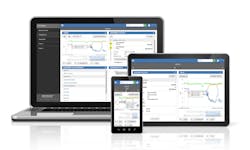Internet of Things Unites Enabling Technology and Smart Controls
Buildings, and especially HVAC systems in buildings, are immensely complex ecosystems which consume a lot of energy and yet are becoming more critical to running the business in buildings beyond just comfort. Sustainability and savings initiatives have been the focus for buildings for a long time. Technology has been leveraged increasingly to address such issues.
We see HVAC systems becoming more aware of and adaptive to the environment, occupant behavior, expected outcomes from demand response, and maintenance needs.
The Internet of Things (IoT) is a network of inter-connected devices with embedded computers and connectivity that drive optimization and new value streams through data and analytics. IoT is not new to buildings and HVAC systems. Building automation systems have been making sense of sensor data, optimizing system performance and driving intelligent actions in building systems for more than three decades.
CLICK TO READ ABOUT JOHNSON CONTROLS' METASYS 8.0
There are may new technical capabilities which make computers and connectivity easier. Miniaturization of electronics, universal connectivity, cloud storage technologies, parallel storage and processing capabilities, sharply declining costs of connectivity and computer capabilities (both at the device and cloud levels) are driving more devices to be instrumented and more data to be collected in buildings. This allows for more advanced analytics to be performed, which help identify energy savings opportunities, predict maintenance needs and simplify building operations. The proliferation of mobile technologies in buildings is enabling ubiquitous access to data and analytics, allowing for faster response.
Historically, controls functions in buildings started with a pre-determined set of events and actions to drive various HVAC systems. So, if your temperature or humidity in a built environment reaches a threshold, you can make the HVAC system work differently. Now, we see HVAC systems becoming more aware of and adaptive to the environment, occupant behavior, expected outcomes from demand response, and maintenance needs. We see more intelligence being driven to the HVAC device and equipment levels, which includes fault detection and diagnostics, allowing for quicker targeted analysis and action. This transition is often referred to as smart controls.
IoT brings enabling technology and smart controls together to drive better outcomes.
